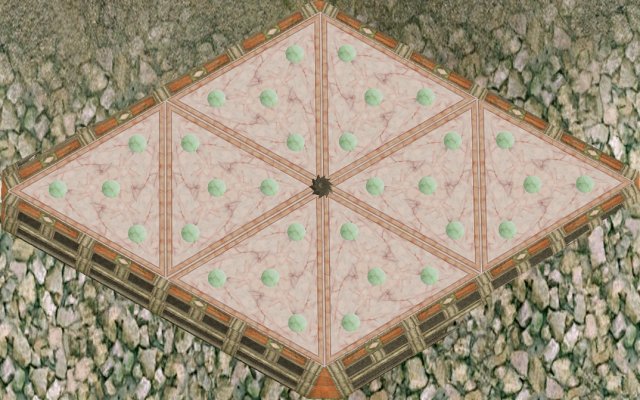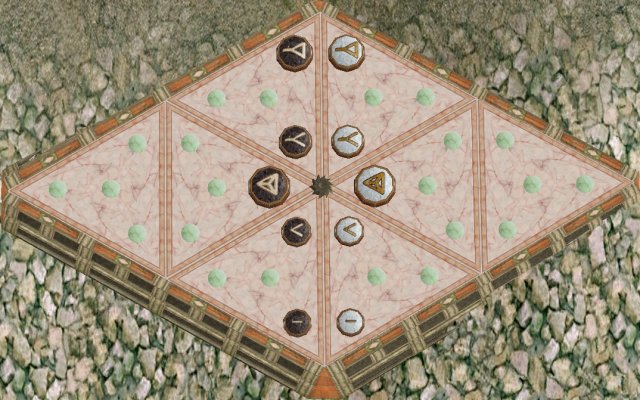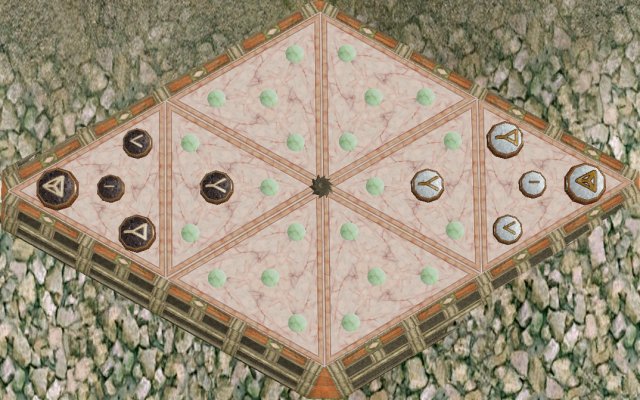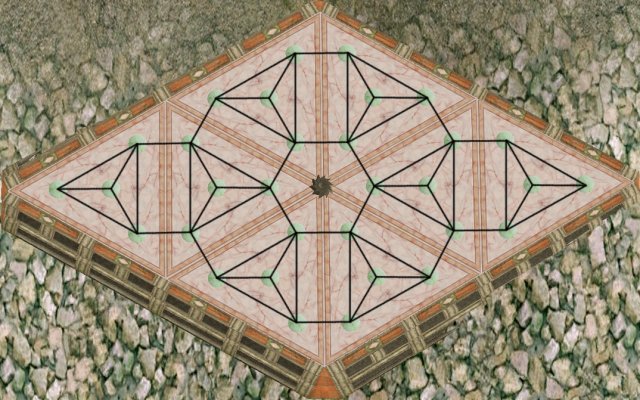User:Feyth
Oyster Catcher Tracker
| Size/Color | Small | Medium | Large | Huge | ||||||||||
|---|---|---|---|---|---|---|---|---|---|---|---|---|---|---|
| 1 | 2 | 3 | 4 | 5 | 6 | 7 | 1 | 2 | 3 | 4 | 1 | 2 | 1 | |
| Aqua | X | X | - | O | - | - | - | - | - | - | - | - | - | O |
| Beige | X | X | - | - | - | - | - | - | - | - | - | - | - | - |
| Black | - | - | - | - | - | - | - | - | - | - | - | - | - | - |
| Coral | - | - | - | - | - | - | - | - | - | - | - | - | - | - |
| Pink | - | - | - | - | - | - | - | - | - | - | - | - | - | - |
| Smoke | - | - | - | - | - | - | - | - | - | - | - | - | - | - |
| White | - | - | - | - | - | - | - | - | - | - | - | - | - | - |
Pearls Not needed
- Large Smoke
- Small Smoke
- Large Beige
- Small Coral
Cooking
--
old conflict game info
Arena Games > Kanivan Tak
Other languages: Française: Jeux Des Arenes Arena Games : Kanivan Tak Note that this information has been copied directly from the T2 wiki, and lightly edited. If you find information that is false or inaccurate, please update it!
- The game is effectively like checkers, except not bound by a 'grid' system.
- Pieces can move in any direction within -60* - 60* from their position provided it is unobstructed, and king pieces can move in any direction.
- Pieces 'hatch' into kings (starting as eggs, and hatching into bird models..) upon reaching the last two rows.
- The actual gameplay is similar to checkers, in that pieces can jump enemy pieces (but don't have to), and it is possible to double- and multi-jump.
- There is also an inbuilt Stalemate feature, which says that if there are 5 consecutive moves in which a non-king piece does not move, and that no pieces are taken/jumped, the game is declared over, and the winner is whoever has the most pieces at that point.
- You can see how many moves are left by clicking on the desk:
[[file:karivan_
If you move a non-king piece or jump an opponent's piece, this number resets to 4.
The pieces are moved by clicking on the arrows shown below:
This will make a marker appear on the board. The red arrows move the marker more than the black. The green button finishes the move.
If there is an opponent's tak in range of yours, you can jump it using the wings button. You'll get a message if the attacking piece can't make it over the opponent's piece, or if jumping would land on another tak or off the edge of the board. Once you have jumped, you can either click on the next piece to multi-jump or click on your own piece and click 'Done jumping'
Name Creator Date Size Description tak_control.jpg Kaotika January 16, 2007 8:16 pm 12062 tak_control.jpg tak_progress.jpg Kaotika January 16, 2007 8:16 pm 52341 tak_progress.jpg Home | Atlas | Guides | Tests | Research | Techs | Skills | Index | Recent Changes | Preferences | Login You must log in to edit pages. | View other revisions Last edited January 26, 2007 1:58 pm by Kaayru (diff) Search:
Arena Games : Yokir
Note that this information has been copied directly from the T2 wiki, and lightly edited. If you find information that is false or innacurate, please update it! This is a three-person variation of a card game called Euchre (normally a four player game with two teams of two... reading about it online will probably help understand the variation). The deck consists of 24 cards of four suits: Architecture (a pyramid, color black), Leadership (a Pharoah's crown, color red), Art & Music (Musical notes and a paintbrush, color black) and Thought (a papyrus scroll, color red); and six ranks: Initiate, Student, Prentice, Journeyman, Scribe and Master.
To win the game, you must reach 7 points (if two players reach 7 points simultaneously, play continues until there is a single player with more points). A series of "hands" is played, with the ability to pick up zero, one, or two points per hand. (Scoring below). Here is how the hands work:
A dealer (although the computer will do the actual dealing) is randomly chosen from the three players at the start of the game, after each hand, the dealership passes down the list. The dealer deals five cards to each player, leaving a pile of 9 cards, the top of these is flipped face-up on the table, and the rest discarded for this hand. Starting on the dealer's left, each player has a chance to accept or reject the face-up card. If the card is accepted, the player takes the card into his hand and discards one of his current ones (discarded card not shown to the other players). The "trump" suit for this hand is the same suit as whatever card was picked up. If the card is rejected by all three players, then it is discarded, and the ability to call any one of the remaining three suits goes around player-by-player again . If everyone passes during this second round, all cards are discarded and everyone receives 0 points for that hand.
The player who calls up trump, either by picked up the card on the first round, or calling one of the other suits on the second round, is on his own for the hand; the other two players are on a team. If the lone player takes 0, 1, or 2 "tricks" the other two players each get 1 point. If the lone player takes 3 or 4 tricks, he gets 1 point. If the lone player takes all 5 tricks, he gets 2 points. Letting your teammate know, in any way, what cards you do or do not have is taboo.
There are 5 tricks per hand. One player leads a card, and the others must play a card of the same suit if they can; otherwise they can play any card they want. Whoever has the highest ranking card of the trump suit wins the trick, if no one has played a card of trump suit (and since you have to play the same suit as what was led, this is often the case) than the highest ranking card *of the suit lead* will win. For the first trick of the game, the player immedietly after the dealer leads. After this, the winner of the trick leads next.
One last, and potentially confusing, detail. In each hand, two of the ordinarily low-ranking Initiate cards are turned into a Sage and an Oracle card. The names appear in brackets underneath the cards' rank, after the trump suit has been chosen.
The Initiate of the trump suit is promoted to Oracle, and is the highest trump card in the hand. The Initiate of the same color suit as the trump suit is promoted to Sage of the trump suit, and is therefore the second highest-ranking card. For example, Art & Music are called trump; The Initiate of Art & Music now becomes the Oracle of Art & Music, and the Initiate of Thought now becomes the Sage of Art & Music (since Thought is the same color suit as Art & Music). The Initiate of Architecture and the Initiate of Leadership are still the same low-ranking cards they were before. (I don't think this is how the Sage and Oracle cards work in this Telling. I believe that Sage and Oracle cards now can trump everything, aka they are higher ranked than the Trump suit Master card. What I am not sure about is which is the higher rank of the two. -- Jaella) The card's ranks mirror the ranks in game, from Low to High the order is: Initiate, Student, Prentice, J'man, Scribe, Master, Sage, Oracle. Thus, the Oracle is the highest ranking trump card. For more information about Yokir, feel free to ask myself, Dors or any of the other Conflicters -- Al-Bilal I rewrote the part about Sage and Oracle of the trump suit. I hope it is less confusing now. Al-Bilal, if you are emphasizing the highest ranking card you should write them from high to low. --Erika
For Example
The cards are ranked thusly from lowest to highest. Initiate, Student, Prentice, Journeyman, Scribe, Master. (with Sage, and Oracle to come after of the trump suit.)
so if player's A, B, and C are playing.
Hand one - Leadership is Trump
Player A plays the sage of Arch Player B doesn't have any Arch cards, so he plays the Student of Leadership Player C is still required to play an Arch card if he has one, which he doesn't, and to not waste his trump cards, plays Journeyman of Thought
Player B wins the trick and leads next hand Hand two - Thought is Trump
Player A plays the Master of Leadership Player B plays his the Initiate of Leadership as he cannot beat Master Player C has no Leadership cards, he has a choice, either play a trump card, or play one of his other cards losing the hand, but saving his trumps
Player A or C wins the trick and leads next hand, depending on what choice C made Things that could be confusing
The Sage card becomes the trump suit, ignoring the picture on the card. If you pick the trump, either by trading, or just choosinng from the list, you HAVE to win the hand or you will be awarded nothing, the other two get a point.
The Rules of Rite of Command
The arena:The arena is made up of three levels.
Level 1 is the furthest from the Dueling Arena desk. Level 2 is in between Levels 1 and 3. Level 3 is the closest to the Dueling Arena desk.
Levels run in a straight line and new cards are added at the end of the line. How to play:A deck of cards is randomly assigned. Each player has the same deck of cards but in a different order. Players have 2 minutes to review the deck of cards
On each turn a player will draw a card from the deck and choose the level in which to play the card.
Cards: There are two types of card; soldiers and weapons. Weapons have a type (e.g. Blunt, Blade) and a Power rating. They may be more effective against specific soldiers. Soldiers have a class, a number of hands and weapon preference.
They can only hold weapons of their preference. They can only hold the number of weapons their hands will allow.
Winning and Losing: When all cards are played combat begins and a winner is decided. Each soldier will look along the line and consider weapons in order. A soldier will take any and every weapon he can regardless of who placed it until he runs out of weapons or his hands are full.
The soldiers for each player will then fight with the first soldier in the Level for Player 1 fighting the first soldier in the Level for Player 2.
The soldier with the greatest power will win. It will then take 3 damage to it's power due to battle fatigue and fight again.
The player who has soldiers left in the Level at the end of battle win's the level. The player that wins the most levels overall wins the game.
The Rules of Witagog
The arena:Each Witagog arena is different. Witagog's can travel along the stone tiled surface only. Witagogs:Witagogs are beetle-like contraptions, they can be upgraded to move faster or fight better. Witagogs have the following charactaristics:
Strength -- The higher the strength the more damage the Witagog can inflict. Defense -- The higher the defense the more damage the Witagog can inflict in retaliation. Max HP -- The higher the Max HP the more hitpoints the Witagog can have. Heal -- The higher the Heal the more hitpoints the Witagog recovers each turn. Speed -- The higher the Speed the less it costs to move the Witagog. Legs -- Each leg allows the Witagog to move or attack in the direction the leg is facing.
How to play:Turns take play in two phases, the Moving Phase and the Building Phase. The first turn is only played with the Building Phase. Each turn thereafter is played with the Moving Phase and then the Building Phase.
Moving Phase:A player has 49 'move points' per Moving Phase. Every time you move a Witagog it depletes your points in relation to the Witagog's speed. If you do not have enough points to move the Witagog you cannot move the Witagog. In the moving phase you can move your Witagog in any direction that it has a leg. You can push your opponent's Witagog along the path by moving into it.
Building Phase:A player has 49 'build points' per Building Phase. Except from the very first phase where the player only has 33 'build points'. You can spend these points to upgrade the charactaristics of your Witagogs. You can also attack your opponent's Witagogs if your Witagog has the appropriate leg.
Attacking:When you attack an opponent's Witagog you deal damage to it equal to your Witagog's strength. The opponent's Witagog will deal damage to your Witagog equal to it's defense. If you did not kill the opponent's witagog it will deal defensive damage again.
Winning and Losing: Win the game by defeating all of your opponent's Witagogs OR Have one of your Witagogs spend 3 consecutive turns in the opponent's archway.
The Rules of SevenbladeItems required: You need some Sevenblades. You can get these from the University or School of Conflict in the arena. How to play:Both players choose a Sevenblade to play. Player 1 then makes a claim about the Sevenblades in play such as 'our Sevenblades have 3 axe heads.' or 'our Sevenblades have 4 trident heads.' Player 2 must either raise the bet, or deny. To raise the bet a player must either choose a larger number or a greater weapon. The weapons are graded as follows: Dagger, Club, Hammer, Mace, Trident, Axe, Sword.
Winning and Losing: The game ends when one player denies. If the last bid matches the number of weapons in both Sevenblades combined then the betting player wins. Otherwise the denying player wins.
Playing Zhadu
Zhadu is played on a unique board made of triangles. Each triangle has four playable points within it: one in the center, and one in each corner.
Empty Board
Each player starts with 5 pieces. These are the 1 piece, the 2 piece, the 3 piece, the 4 piece, and the 123 piece.
Initial Position
Piece names, from top to bottom: 4, 3, 123, 2, 1
Setup From the above initial position, the players take turns setting up the board. The board must begin with all pieces in the "starting spots" of the board. These spots consist of all four points in the end triangles, and the center point on each side. Which piece goes where does not matter, save for strategic considerations. The following picture shows an example starting setup:
Start Position
(example) In order to place a piece, first click on the piece you want to place. Then click on the point to which you wish to move it. Finally, click on the black spot in the middle of the board.
Movement Once all 10 pieces are placed, the game begins. The game consists of two elements: moving pieces, and capturing pieces. Players take turns moving their pieces. Pieces can move: from a corner of a triangle to its center; from the center of a triangle to one of its corners; or from the corner of one triangle to the adjacent corner of another triangle. The following picture is a visual depiction of these moves. Each line segment is a valid move:
Legal Moves
Each line segment is a legal move of distance one.
Pieces move a number of spaces determined by the value of a piece. The 1 piece can (and must) move one space. The 2 piece can (and must) move two space. Similarly with the 3 and 4 pieces. The 123 piece can move either 1, 2, or 3 spaces. Pieces may backtrack. Moving the 2 piece forward one, and then back where it started is a legal move. Pieces may not move through other pieces.
In order to move a piece, first click on the piece you wish to move. The click on each intermediary space through which it moves until you end up at the desired destination. To finish the move, click on the black spot in the center of the board. To cancel a move, click on the black spot before you have completed a legal move, after you have completed an illegal move, or click on another of your pieces.
Capturing and Winning You can capture one of your opponent's pieces by landing on it as the last part of one of your moves. Winning is called "Joining in the sharing." In order to join in the sharing, the sum of the first and last pieces you capture must equal four. The following table describes this in detail:
If you first capture... you must capture this to win 1 3 or 123 2 123 3 1 or 123 4 You have already won 123 1, 2, or 3 Matches and Rank Like the Test of Telepathy, you must win one more game than your opponent to win a match. You need two more match wins than lossed to go up a rank. If you have two more match losses than wins and cannot spend a win to stay in the tournament, you will have to reset. You may reset once every seven days.
Original Directions The original directions can be found in this PDF.
Notes When the game starts, you are in placement mode. You have to place all five of your stones in the five starting positions before the game begins. These placements ignore movement rules. You must click the black spot in the middle of the board to finalize a placement or a move. If you wish to cancel a move before you finalize it, just click on any other piece. No ante is required to play Zhadu. You can end up in a situation where both players agree that no one can force a win. If this occurs, it is good form for both players to declate a stalemate (from the board menu). If one player runs out of time, the opponent may end the game and claim a win, or they may agree to a stalemate.




